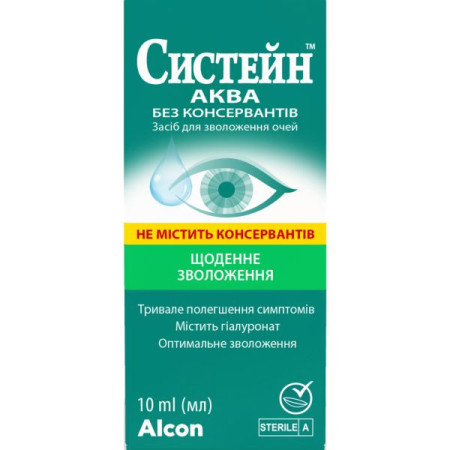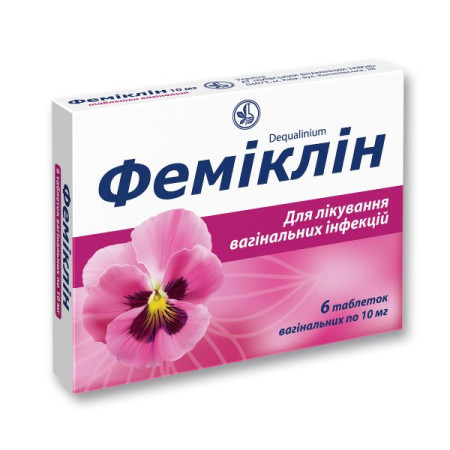Torsid tablets 10 mg blister No. 30

Instructions Torsid tablets 10 mg blister No. 30
Composition
active ingredient: torasemide;
1 tablet contains torasemide in terms of 100% substance 5 mg or 10 mg;
Excipients: lactose monohydrate, pregelatinized starch, colloidal anhydrous silicon dioxide, magnesium stearate.
Dosage form
Pills.
Main physicochemical properties: tablets with a flat surface with a score and a bevel, white or almost white in color.
Pharmacotherapeutic group
Diuretics. Highly active diuretics.
ATX code S0ZS A04.
Pharmacological properties
Pharmacodynamics.
The main mechanism of diuretic action is due to feedback binding to the Na+/2Cl-/K+ cotransporter in the apical part of the loop of Henle, as a result of which the renal reabsorption of sodium and chlorine ions in the ascending part of the loop of Henle is reduced or completely inhibited, the osmotic pressure of intracellular fluid and water reabsorption are reduced. In the dose range of 5–100 mg, the increase in diuresis is proportional to the logarithm of the dose. An increase in diuresis also occurs in cases where other diuretics (for example, thiazides) no longer have a sufficient effect, for example, with limited renal function.
Eliminates edema, has an antihypertensive effect, which is due to a decrease in peripheral vascular resistance due to a decrease in the content of free calcium in the cells of the muscle layer of arteries and normalization of disturbed electrolyte balance. As a result, contractility and the reaction of vessels to the body's own pressor substances, in particular catecholamines, are reduced. Improves the working conditions of the heart by reducing pre- and afterload. After oral administration, the maximum diuretic effect lasts 1–3 hours, and the diuretic effect persists for almost 12 hours. The hypotensive effect of torasemide develops gradually during the first week and reaches a maximum no later than 12 weeks.
Pharmacokinetics.
After ingestion, it is rapidly and almost completely absorbed from the digestive tract. The maximum concentration in blood plasma is observed after 1–2 hours. The binding of torasemide to plasma proteins is more than 99%, the metabolites M1, M3 and M5 are 86%, 95% and 97%, respectively. Bioavailability is about 80% with minor individual variations and does not depend on food intake. It is metabolized in the liver by the cytochrome P450 system with the formation of metabolites (M1, M3 and M5). The main metabolite M5 does not exhibit a diuretic effect, the active metabolites M1 and M3 together account for about 10% of the pharmacodynamic effect. The half-life of torasemide and its metabolites in healthy volunteers is 3–4 hours. About 83% of the dose is excreted through the renal tubules: unchanged (24%) and as metabolites (M1 – 12%, M3 – 3%, M5 – 41%). Total clearance is 40 ml/min, renal clearance is approximately 10 ml/min. In renal failure, the total clearance and half-life of torasemide do not change, and the half-life of M3 and M5 is prolonged. However, the pharmacodynamic characteristics remain unchanged, the duration of action is not affected by the severity of renal failure. In patients with impaired liver function or heart failure, the half-lives of torasemide and metabolite M5 are slightly prolonged, and cumulation of torasemide and its metabolites is not observed.
Indication
Essential hypertension. Treatment and prevention of recurrence of edema and/or effusions caused by heart failure.
Contraindication
Hypersensitivity to the active substance, to sulfonylurea drugs and to the excipients of the drug. Renal failure with anuria. Hepatic coma or precoma. Arterial hypotension. Hypovolemia. Hyponatremia. Hypokalemia. Significant urinary disorders, for example, due to prostatic hypertrophy. Breastfeeding.
Interaction with other medicinal products and other types of interactions
Torasemide enhances the effect of other antihypertensive agents, in particular, angiotensin-converting enzyme inhibitors, which may cause excessive lowering of blood pressure when used simultaneously. When using torasemide simultaneously with digitalis drugs, potassium deficiency caused by the use of a diuretic may lead to an increase or intensification of the side effects of both drugs. Torasemide may reduce the effectiveness of antidiabetic agents. Probenecid-containing non-steroidal anti-inflammatory drugs (e.g. indomethacin, acetylsalicylic acid) may inhibit the diuretic and antihypertensive effects of torasemide. When treated with salicylates in high doses, torasemide may increase their toxic effect on the central nervous system. Torasemide, especially in high doses, may enhance the ototoxic and nephrotoxic effects of ethacrynic acid and aminoglycoside antibiotics, such as kanamycin, gentamicin, tobramycin and cytostatics - active platinum derivatives, as well as the nephrotoxic effects of cephalosporins. Torasemide may enhance the effects of theophylline, as well as the effects of curare-like drugs. Laxatives, as well as mineralocorticoids and glucocorticoids may enhance the loss of potassium caused by torasemide. With the simultaneous use of torasemide and lithium preparations, an increase in the concentration of lithium in the blood plasma is possible, which may lead to increased exposure and increased side effects of lithium. Torasemide may reduce the vasoconstrictor effect of catecholamines, such as epinephrine and norepinephrine. When used simultaneously with cholestyramine, the absorption of torasemide and, accordingly, its expected effectiveness may be reduced.
Application features
Before starting the drug, it is necessary to eliminate existing hypokalemia, hyponatremia or hypovolemia. With prolonged use of torasemide, regular monitoring of electrolyte balance, in particular serum potassium, is required, especially in patients who are simultaneously using digitalis glycosides, glucocorticosteroids, mineralocorticosteroids or laxatives. In addition, it is necessary to regularly monitor the content of glucose, uric acid, creatinine and lipids in the blood. Torasemide should be used with particular caution in patients suffering from liver diseases accompanied by cirrhosis of the liver and ascites, since sudden changes in water and electrolyte balance can lead to hepatic coma. Therapy with torasemide (as well as other diuretics) in patients of this group should be carried out in a hospital setting. To prevent hypokalemia and metabolic acidosis, the drug should be prescribed with aldosterone antagonists or drugs that promote potassium retention in the body. After the use of torasemide, cases of ototoxicity (tinnitus and hearing loss) were observed, which were reversible, but a direct relationship with the use of the drug has not been established.
When prescribing diuretics, it is necessary to carefully monitor clinical symptoms of electrolyte imbalance, hypovolemia, extrarenal azotemia and other disorders, which may manifest as dry mouth, thirst, weakness, lethargy, drowsiness, agitation, muscle pain or cramps, myasthenia gravis, hypotension, oliguria, tachycardia, nausea, vomiting. Excessive diuresis can cause dehydration, lead to a decrease in circulating blood volume, thrombosis and embolism, especially in elderly patients.
Patients with water and electrolyte imbalance should discontinue use of the drug and resume therapy, starting with lower doses, after the undesirable effects have resolved.
Since treatment with torasemide may cause an increase in blood glucose levels, careful monitoring of carbohydrate metabolism is necessary in patients with latent and overt diabetes. Blood counts (erythrocytes, leukocytes, platelets) should also be regularly monitored. Especially at the beginning of treatment in elderly patients, special attention should be paid to the appearance of symptoms of electrolyte loss and blood clotting.
In the absence of sufficient clinical experience, torasemide should not be prescribed for the following diseases and conditions: gout; arrhythmias, e.g. sinoatrial block, atrioventricular block of the II and III degrees; pathological changes in acid-base metabolism; concomitant therapy with lithium, aminoglycosides or cephalosporins; pathological changes in the blood picture, e.g. thrombocytopenia or anemia in patients without renal failure; impaired renal function caused by nephrotoxic substances.
The drug contains lactose, therefore patients with rare hereditary diseases such as galactose intolerance, Lapp lactase deficiency or glucose-galactose malabsorption should not use this drug.
The use of Torsid® tablets may cause a positive result in a doping test. It is impossible to predict the health effects if Torsid® tablets are used incorrectly, i.e. for doping purposes, in which case possible harm to health cannot be excluded.
Use during pregnancy or breastfeeding
Pregnancy. There are no reliable data on the effect of torasemide on the embryo and fetus in humans. Animal experiments have shown reproductive toxicity of torasemide. Torasemide penetrates the placental barrier. In connection with the above, torasemide can be used during pregnancy only for vital indications and in the minimum possible effective dose. Diuretics are not suitable for the standard treatment regimen for arterial hypertension or edema in pregnant women, since they can reduce the perfusion of the placental barrier and cause toxic effects on intrauterine development of the fetus. If torasemide is used to treat pregnant women with heart failure or renal failure, careful monitoring of electrolyte levels and hematocrit in the blood, as well as fetal development, is necessary.
Breastfeeding. It is currently not known whether torasemide is excreted in human or animal breast milk. A risk to the newborn/infants cannot be excluded. Therefore, torasemide is contraindicated during breastfeeding. If it is necessary to use torasemide during this period, breastfeeding should be discontinued.
Fertility.
Studies on the effect of torasemide on fertility in humans have not been conducted. In animal experiments, no such effect of torasemide was detected.
Ability to influence reaction speed when driving vehicles or other mechanisms
Even when used properly, torasemide may affect the patient's reactions to such an extent that it will have a significant negative impact on the ability to drive or operate machinery. This is particularly true when starting treatment, increasing the dose of the drug, changing the drug or prescribing concomitant therapy. Therefore, extreme caution should be exercised when driving or operating machinery while using torasemide.
Method of administration and doses
Adults.
Take orally once a day in the morning after meals, do not chew, drink a small amount of liquid. The dose and duration of treatment should be set individually, taking into account the indications, effectiveness and tolerability of therapy.
In essential hypertension. The usual dose is 2.5 mg of Torsid®. If after 12 weeks of therapy with the drug at a dose of 2.5 mg per day, normalization of blood pressure is not achieved, the dose can be increased to 5 mg. Further increase in dose is inappropriate, since this will not lead to a further decrease in blood pressure.
For edema or effusions: the initial dose is 5 mg of Torsid® per day. This dose is usually considered maintenance. If the daily dose of 5 mg is insufficient, then 10 mg of torasemide per day should be used. The dose can be increased, depending on the severity of the disease, to 20 mg of the drug per day.
In case of hepatic insufficiency. Treatment of such patients should be carried out with caution, since an increase in the concentration of torasemide in the blood plasma is possible.
Elderly patients: No special dose adjustment is required. There are no adequate studies comparing the treatment of elderly patients with younger patients.
Children.
Torasemide should not be used in children due to the lack of sufficient clinical experience.
Overdose
Typical symptoms are unknown. Overdose may cause excessive diuresis, including the risk of excessive loss of water and electrolytes, drowsiness, amentia (a form of impaired consciousness), symptomatic hypotension, cardiovascular failure and digestive disorders.
Treatment of overdose. Specific antidote is unknown. Symptoms of intoxication usually disappear when the dosage is reduced and the drug is discontinued and with appropriate fluid and electrolyte replacement (blood electrolyte levels should be monitored). Torasemide is not removed from the blood by hemodialysis. Treatment of hypovolemia: fluid volume replacement. Treatment of hypokalemia: potassium supplements. Treatment of cardiovascular failure: patient should be placed in a supine position and, if necessary, symptomatic therapy should be prescribed.
Anaphylactic shock (immediate measures). At the first appearance of skin reactions (such as, for example, urticaria or redness of the skin), the patient's agitated state, headache, sweating, nausea, cyanosis, a vein catheterization should be performed; the patient should be given a horizontal position, ensure free air flow, and oxygen should be administered. If necessary, epinephrine, volume-replacing solutions, and glucocorticoid hormones should be administered.
Side effects
Metabolism/electrolytes. Common: increased metabolic alkalosis. Muscle spasms (especially at the beginning of treatment), indigestion, flatulence, urinary urgency, skin rash. Increased blood uric acid and glucose concentrations, as well as cholesterol and triglycerides. Hypokalemia with concomitant potassium-free diet, vomiting, diarrhea, after excessive use of laxatives, and in patients with chronic liver dysfunction. Depending on the dosage and duration of treatment, disturbances of water and electrolyte balance are possible, e.g. hypovolemia, hypokalemia and/or hyponatremia. With significant fluid and electrolyte losses as a result of increased urination, hypotension, headache, fatigue, drowsiness may occur, especially at the beginning of treatment and in elderly patients.
Cardiovascular system: Very rare: due to possible blood thickening, thromboembolic complications, confusion, hypotension, as well as circulatory and cardiac disorders, including cardiac and cerebral ischemia, which can lead, for example, to arrhythmia, angina pectoris, acute myocardial infarction, syncope, may occur.
From the digestive system. Common: digestive system disorders (especially at the beginning of treatment), including loss of appetite, stomach pain, nausea, vomiting, diarrhea, constipation. Very rare: pancreatitis.
Renal and urinary disorders: Uncommon: increased blood creatinine and urea levels. In patients with urinary disorders (e.g., prostatic hypertrophy), increased urine production may lead to urinary retention and overdistension of the bladder.
Hepatic: Common: increased concentration of certain liver enzymes (gamma-glutamyl transpeptidase) in the blood.
Immune system disorders: Very rare: allergic reactions, e.g. pruritus, exanthema, photosensitivity, severe skin reactions.
Blood and hematopoietic system disorders: Very rare: decrease in platelets, erythrocytes and/or leukocytes as a result of hemoconcentration.
General manifestations and reactions at the injection site. Common: headache, dizziness, fatigue, general weakness (especially at the beginning of treatment). Uncommon: dry mouth, unpleasant sensations in the extremities (paresthesia). Very rare: visual disturbances, tinnitus, hearing loss, hearing loss.
Expiration date
3 years.
Do not use the drug after the expiration date indicated on the package.
Storage conditions
Store in the original packaging at a temperature not exceeding 25 °C.
Keep out of reach of children.
Packaging
5 mg tablets. 10 tablets in a blister. 1 or 3 blisters in a pack.
10 mg tablets. 10 tablets in a blister. 1 or 3 or 9 blisters in a pack.
Vacation category
According to the recipe.
Producer
JSC "Farmak".
Address
Ukraine, 04080, Kyiv, Kyrylivska St., 74.
There are no reviews for this product.
There are no reviews for this product, be the first to leave your review.
No questions about this product, be the first and ask your question.
















